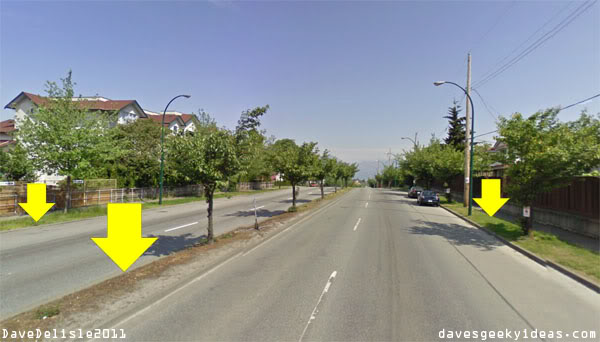Using AstroTurf To Conserve Energy, Reduce Upkeep, And Consume Waste

Boundary Road in Vancover/Burnaby, image courtesy of Google Street View
All over your city you will see grass lining major streets and medians. The grass looks nice and beautifies urban centers, but it require a lot of upkeep in watering and cutting. These patches of grass are also seldom traversed by foot traffic, making them purely decoration.
Instead of maintaining these patches of grass, I believe it would be beneficial to install artificial grass in these locations. The initial cost would be high, but no more watering or cutting (Lawnmowers need fuel!). Plus the materials used in artificial grass would be made from recycled plastics and rubbers (old tires), so it would be a good use of waste.
To the best of my knowledge, Astroturf requires replacement every so often, but to date the application of the artificial grass has only been in sports stadiums, where the grass therein sees a lot of use. A patch of grass on the side of the road would only see a fraction of foot traffic comparatively.
One of the cool aspects of installing fake grass is that you could instill a pattern or design, much like a carpet. Imagine seeing a road flanked by checkerboard grass (two shades of green, not black and white - though you could paint it any color), or another fancy pattern. Would look like something out of a Sonic the Hedgehog level.
This idea is just for the sides of roads, not for parks or any large patches of land. The importance of greenery in urban centers is not lost on me, but a more targeted approach would be beneficial in conserving energy (and saving money).
If you like this post check out the Buoyancy Energy idea I posted a long time ago.
Posted on September 5, 2011, in Architecture, Environment, Transportation and tagged Architecture, Design, Energy, Environment, Transportation. Bookmark the permalink. Leave a Comment.

Leave a Comment
Comments (0)